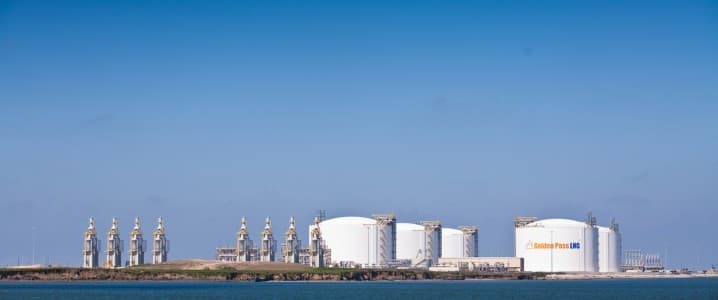The U.S.-EU trade deal calls for the European Union buying $250 billion worth of American energy every year over the next three years. While additional U.S. energy supply would further help the bloc on its path to ditch Russian energy imports within a couple of years, the volumes needed to meet the goal in the trade deal are so high that they are unrealistic, according to analysts.
U.S. LNG developers and exporters are riding the momentum with the end of the Biden-era moratorium on new project approvals and a Trump Administration ready to support and seek LNG offtake deals for a massive new project in Alaska.
American energy is a winner in the U.S.-EU trade deal, which sets tariffs on most EU goods at 15%, half compared to the initially proposed 30%.
However, U.S. LNG exports would need to dramatically increase – from already high levels – if Europe is to buy a total of $750 billion of American energy in three years.
Is Tripling the EU Purchases of U.S. Energy Feasible?
The acceleration of U.S. exports will undoubtedly increase America’s geopolitical leverage at a time when Europe seeks to ditch Russian gas by 2027.
Yet, analysts question the feasibility of the U.S. LNG export boom as the EU will need to at least triple its 2024 imports of U.S. oil, gas, and coal to meet the terms of the trade deal.
Total U.S. exports of petroleum products, crude oil, and natural gas each reached record highs in 2024, data from the Energy Information Administration (EIA) show.
Related: Trump Says ‘We’ll Just Step It Up’—But Can U.S. Oil Deliver?
Overall, the entire value of all U.S. energy exports to all countries in the world was about $318 billion. The EU bought oil, LNG, and coal worth $76 billion last year, according to Reuters’ calculations based on Eurostat data.
This means that the EU needs to triple these imports, and this is unlikely to happen, analysts say.
Even as U.S. LNG exports have set records in recent years, they cannot materially increase in the near to medium term.
America’s LNG export capacity is rising as new plants approved years ago come online.
Despite the spree of final investment decisions (FIDs) for new projects under the Trump Administration, the facilities will take years to build and become operational.
The U.S. has limits to its current capacity, after all.
With the EU pledging more LNG and other energy purchases in the short and medium term, American developers cannot meet this demand, which is likely to be artificially created and not necessarily driven by the market.
“Purchases of US energy products will diversify our sources of supply and contribute to Europe’s energy security,” the President of the European Commission, Ursula von der Leyen, said last week, commenting on the trade deal.
“We will replace Russian gas and oil with significant purchases of US LNG, oil and nuclear fuels.”
U.S. LNG Export Boom Won’t Be Enough
But these significant purchases will need a significant increase in U.S. export capacity. All the way through 2028, all U.S. LNG export growth would be the result of existing and under-construction facilities announced as of June 2024, the EIA estimated in its Annual Energy Outlook 2025 earlier this month.
U.S. LNG exports have increased every year since 2016, rising from 0.5 Bcf/d in 2016 to 11.9 Bcf/d in 2024, making the United States the world’s largest LNG exporter in 2023 and 2024.
EIA expects U.S. LNG exports to continue growing, driven by the start-up of Plaquemines LNG, Corpus Christi LNG Stage 3, and Golden Pass LNG. These facilities have a combined nominal export capacity of 5.3 Bcf/d (up to 6.3 Bcf/d peak capacity) and will expand the existing U.S. LNG export capacity by almost 50% once these projects become fully operational.
Moreover, an annual maximum of 0.8 trillion cubic feet (Tcf) of new U.S. LNG export capacity can be built between 2030 and 2050, but if it is economical to do so, the administration noted.
Even if all other planned or announced projects were approved today, they won’t make it on time for a significant rise in LNG exports to drastically boost EU imports within three years.
The EU has become a top buyer of U.S. LNG, but LNG exporters, with their flexible pricing and destination-free cargoes often send their gas to regions with higher prices compared to Europe. This is Asia, the top LNG-importing region, where a number of other countries – including Japan and India – have also raced to pledge increased purchases of American LNG and other energy products to negotiate lower tariffs and strike more favorable trade deals.
In short, U.S. LNG exports are booming, but they won’t be anywhere close to helping the EU triple its imports of American energy, per the trade deal.
The Europe-Asia competition for U.S. LNG supply will also have implications on prices. Internationally, LNG prices could rise and incentivize U.S. producers to export more natural gas, which would reduce the domestically available supply in the United States. This would raise natural gas prices and energy costs for consumers—a development that the Trump Administration would be eager to avoid.
By Tsvetana Paraskova for Oilprice.com
More Top Reads From Oilprice.com
